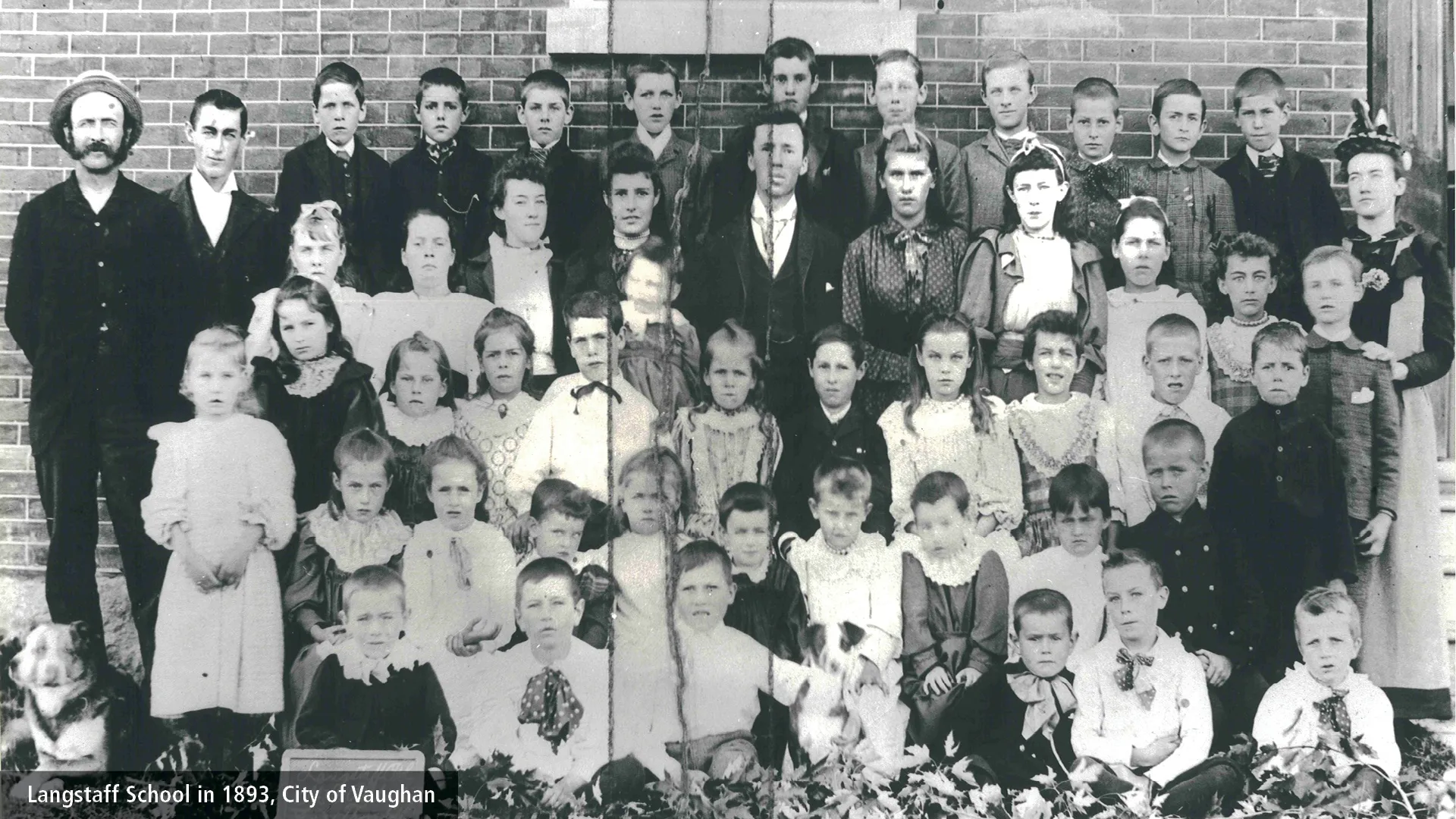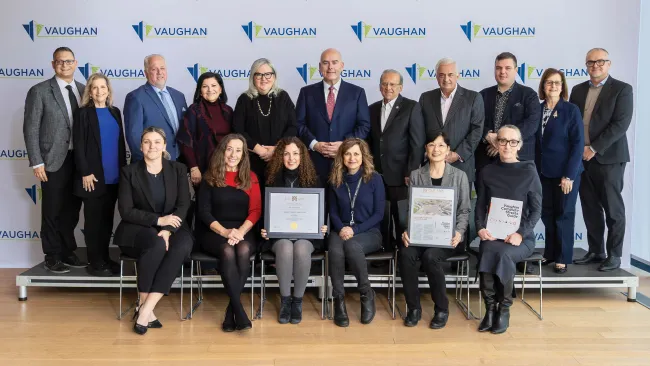From the Archives
Langstaff School
The City of Vaughan’s archives house more than 600 collections dating from the early 1700s to the present day. Within these files are the stories of how Vaughan evolved from the traditional territories of the First Peoples of Turtle Island to the bustling city it is today.
Let’s take a look back at our history and share the stories of the people, places and moments that helped shape the city we know today. This month’s feature is on Langstaff School. As one of the community’s earliest centres of learning, it offers a glimpse into how education began and evolved in Vaughan.
Langstaff Road was named after John Langstaff, who immigrated to Thornhill from New Jersey in the early 1800s, and became a teacher, militia member during the War of 1812 and owner of multiple local businesses and factories.
Langstaff School was established in 1796 at the corner of Lot 35, Concession 1, along Yonge Street. The original building was constructed by Balsor Munshaw as a family home and converted into a school once the Munshaw family moved. Students travelled to this school from as far north as Richmond Hill and as far south as York Townline, known today as Steeles Avenue.
At first, Langstaff operated as a private school. Families covered the costs of both the school and the teacher, who earned a small salary and rotated between staying in the homes of students’ families for two weeks at a time. Teachers also followed strict rules of conduct, such as being permitted to go courting (on dates) only one evening a week — two if they attended church regularly — and limiting their reading material to the Bible and other “good” books.
The first teacher was John Langstaff, who taught until 1812, when he enlisted to fight in the War of 1812. When he left, the community called for a new school building. Nicholas Cober, an early settler of Vaughan Township who had emigrated from Pennsylvania and adopted the Cober surname, donated half an acre of land, and a new structure was built between 1811 and 1815 at what is now 8210 Yonge St. The property has remained a school ever since, expanding over time to eight acres through purchases and gifts.
In 1846, trustees were elected for Langstaff, including George Darling, Henry Miller and John T. Tindall. The school eventually became known as Union School, Section 2 of Vaughan-Markham. It stood on the border between the two townships, with Vaughan and Markham sharing the students, the costs and the responsibility of running it. Around this time, more land was purchased from Peter Cober, and the school was designated a public school.
Shinny hockey was a popular pastime at Langstaff during the 1890s. The game was played with a curved elm stick and a block of wood or a ball as the puck.
In 1892, a large one-room brick schoolhouse was built slightly south on the southwest corner of Lot 34, Concession 1. The smaller original school was sold and moved to Edgeley, a small rural community in the city, before eventually being torn down. In 1926, a new building with two classrooms was constructed on the same property, and over time, it was expanded to include four additional classrooms. After serving as a school for many years, the building later became the Uplands Community Learning Centre.
From its beginnings as a simple family home, to a private school, to a public institution, to a learning centre, Langstaff School has stood as a cornerstone of local education and community life for more than two centuries. Its story reflects the growth, resilience and traditions of Vaughan.
VIEW VAUGHAN'S ARCHIVES ONLINE!
Looking for more information about the history of Vaughan? The City's Archival Collection is on digital display for all to explore! The below galleries are available in the City's online gallery on Flickr:
From Township to City: The Evolution of Vaughan
Historical Families of Vaughan
Historical Photography
Past Mayors of Vaughan
Prohibition in Vaughan
Recollections of Rural Vaughan
The Great Depression in Vaughan
The Mary Wood Collection
The Way We Were: Representations of Vaughan's Past
Vaughan’s Forgotten Heroes
Vaughan Lodge Fonds
Vaughan Working Environments
Vaughan Through the Ages: Medicine, Music and Sports and Recreation
and more!
A personal Flickr account is not required to access the City's online gallery, which contains only a small selection of the full archives collection. If you are looking for a particular image, original file, primary source record or more, please visit the Archival Database or contact the City by calling 905-832-2281 or emailing archives@vaughan.ca.
By managing and preserving both City and community records, the City’s Enterprise Information Management Services team ensures that Vaughan's rich and varied history will continue to be available for future generations. Learn more at vaughan.ca/archives.
For the latest updates, subscribe to Vaughan News and follow the official corporate channels on X, Facebook, Instagram and LinkedIn.





